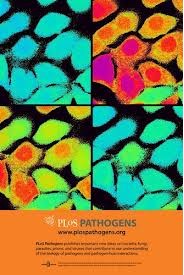
图片来源:medicalxpress.com
开发HIV疫苗的一种方法依赖于可以抵御不同循环HIV的广谱中和抗体(broadly neutralizing antibodies, bnAbs),这种抗体分离自感染HIV的个体机体中,但其却是高度进化且不寻常的抗体;近日一项刊登在国际杂志PLoS Pathogens上的研究报告中,来自斯克利普斯研究所等机构的科学家报道了一种鉴别bnAbs必要特征的新方法,同时研究者还提出了一些更适合于开发新型的HIV疫苗的简化版本,随后对简化版本的bnAbs进行分析来指导新型疫苗的开发。
来自一些感染HIV个体机体中的bnAbs不会通过疫苗所诱导,而这或许是因为bnAbs是一种非常罕见的抗体,其是随着机体HIV的不断进化所驱动的连续性突变适应所诱导产生的。假设并不是所有的bnAbs的特性都对其理想的功能必不可少,为此研究人员开始研究制造携带最小化罕见特性的bnAbs,为了对bnAbs的罕见特性进行定量,研究者开发了一种名为“抗体特性频率”(AFF)的计算机方法,同时研究者将编码bnAb的DNA序列同来自健康供体(从未感染HIV)机体记忆B细胞中的相关序列进行对比。
当将AFF方法应用于bnAbs检测时,研究者就在HIV的bnAbs和正常的人类记忆抗体的频率特性上发现了明显的差异,潜在的HIV bnAbs或许并不能更好地提供HIV疫苗的开发策略,因为携带相似特性的抗体并不能以一种一致性的方式被诱导,研究者认为,携带较高频率特性的潜在HIV bnAbs的发现或许应当将关注于bnAbs所靶向作用的抗原表位。VRC01是一种最为罕见的bnAb,其和正常的人类抗体共享有较少的特性,从另一方面来讲,对VRC01的结构分析结果表明,许多不寻常的特性或许对于其结合并且中和HIV并不必要,因此研究者就开发出了简化版本的VRC01,同时研究者还检测了许多候选者结合多种HIV菌株的能力,最终发现了两种最低程度突变的VRC01级别的bnAbs具有良好的中和潜力。
另外一种名为Min12A21的工程化抗体则具有最高的频率特性,其和正常的记忆抗体共享有多种特性,其可以保留对HIV的特性。随后研究人员将抗体和其病毒靶向蛋白之间的最小变异分为空间集群,利用突变及结构分析结合中和性实验,他们就可以确定从最早接触疫苗产生的抗体到产生具有bnAb活性的抗体过程中所需要的突变步骤。
最后,研究者表示,相比当前的bnAbs而言我们或许能够开发出更加易于管理的潜在HIV bnAbs;通过抗体和抗原结构引导疫苗设计策略或许未来可以用于开发其它HIV bnAbs或抵御其它病原体的保护性Abs的新型候选疫苗。

doi:10.1371/journal.ppat.1005815
PMC:
PMID:
Minimally Mutated HIV-1 Broadly Neutralizing Antibodies to Guide Reductionist Vaccine Design
Joseph G. Jardine , Devin Sok , Jean-Philippe Julien , Bryan Briney , Anita Sarkar, Chi-Hui Liang, Erin A. Scherer, Carole J. Henry Dunand, Yumiko Adachi, Devan Diwanji, Jessica Hsueh, Meaghan Jones, Oleksandr Kalyuzhniy, [ ... ], William R. Schief
An optimal HIV vaccine should induce broadly neutralizing antibodies (bnAbs) that neutralize diverse viral strains and subtypes. However, potent bnAbs develop in only a small fraction of HIV-infected individuals, all contain rare features such as extensive mutation, insertions, deletions, and/or long complementarity-determining regions, and some are polyreactive, casting doubt on whether bnAbs to HIV can be reliably induced by vaccination. We engineered two potent VRC01-class bnAbs that minimized rare features. According to a quantitative features frequency analysis, the set of features for one of these minimally mutated bnAbs compared favorably with all 68 HIV bnAbs analyzed and was similar to antibodies elicited by common vaccines. This same minimally mutated bnAb lacked polyreactivity in four different assays. We then divided the minimal mutations into spatial clusters and dissected the epitope components interacting with those clusters, by mutational and crystallographic analyses coupled with neutralization assays. Finally, by synthesizing available data, we developed a working-concept boosting strategy to select the mutation clusters in a logical order following a germline-targeting prime. We have thus developed potent HIV bnAbs that may be more tractable vaccine goals compared to existing bnAbs, and we have proposed a strategy to elicit them. This reductionist approach to vaccine design, guided by antibody and antigen structure, could be applied to design candidate vaccines for other HIV bnAbs or protective Abs against other pathogens.
来源:生物谷
| 欢迎光临 中国病毒学论坛|我们一直在坚持! (http://virology.com.cn/) | Powered by Discuz! X3.2 |